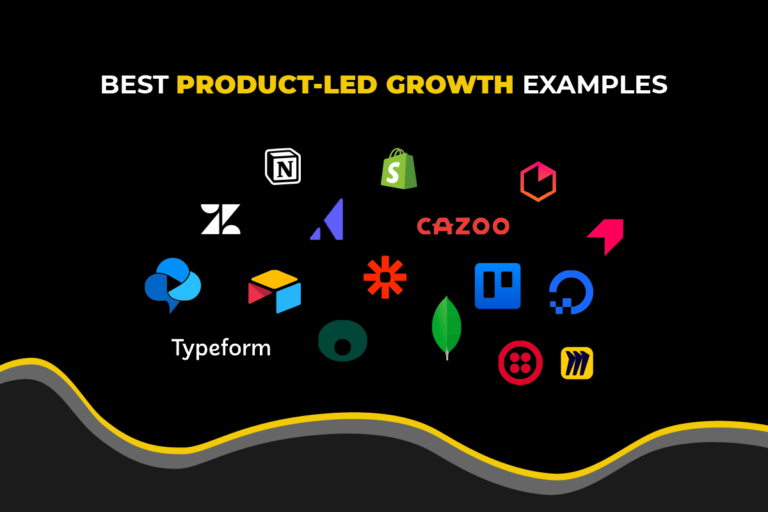People tend to rely on tactics and growth hacks when thinking about the path to growth. But in reality, you need a solid strategy.
While many strategies target power and core users, it’s actually an adjacent growth strategy that holds the most significant opportunity for growth.
Core users are the ones you had in mind when you built your product.
Power users are those whose skills and expertise are more advanced than the typical user.
Adjacent users are users who are aware of the product, and possibly tried and even used it, but for some reason, they cannot be successfully engaged users.
In this article, we’ll help you understand how adjacent users are the key to unlocking growth. We’ll walk you through the Adjacent User Theory, which touches on:
- The Jobs-To-Be-Done Framework
- How to Map Success Gaps Between Users
- The Importance of Growth Experiments & Final Interventions
Note: having an “okay” product doesn’t cut it anymore. For this framework to be relevant, you must have an excellent solution for users’ problems to keep them coming back. This strategy is for businesses that already have core users and power users.
What is Adjacent User Theory?
The Adjacent User Theory is a framework or an observation made by Bangaly Kaba, the former VP of Growth at Instagram and Instacart, who currently works with Reforge:
The theory postulates that adjacent users are aware of the product, possibly tried and even used it, but for some reason, they cannot be successfully engaged users. This is typical when the current product positioning or experience has too many barriers to adoption for them.
In other words, you'll notice users have gone through your funnel, tried going through your onboarding, and for whatever reason, they never became long-term engaged users.
The Adjacent User Theory uses engagement data from your company to find both your current retention and potential retention. The difference between the two retention rates represents your adjacent users.
The best part is that adjacent users already fall into your demographic, so there’s no need to change your market position, expand your marketing budget, or open a new market.
Instead, you merely need to identify the obstacles that are preventing those users from adopting your product.
Adjacent users are your biggest opportunity for growth, at almost no cost to the company.
Just how ample is that opportunity for growth?
Take a look at the retention curve between current and potential retention.
It demonstrates the period of time someone has used your product and keeps coming back. The blue line represents a product and the retention of users. The green line represents the potential retention of adjacent users upon removing the obstacles.
There’s an opportunity here. For example, there’s a difference between a 10% retention rate and a 15% retention rate (where the line starts to flatten).
How big of a difference would that make?
Harvard Business Review calculates, on average, a 5% increase in customer retention can result in 25% to 95% more profit!
So how do you go about identifying those obstacles to retain those users?
The Jobs-To-Be-Done Framework
Traditionally, we use personas to understand users. While personas have many potential benefits regarding probabilities within segmentation, it’s not helpful when understanding the causality or why that specific set of people come to you to solve their problem.
What is the alternative to using personas to understand users?
The jobs-to-be-done framework!
This is a 4-step framework to help you understand your users and why they turn to your product to solve their problems. It consists of:
- Motivation
- Context
- Obstacles
- Expected Outcomes
We start the framework by first creating a jobs-to-be-done story. A jobs-to-be-done story is similar to a user story except, instead of presuming a solution, it lays out a situation, motivation, and expected outcome.
To understand this, we’ll use Mailchimp as an example.
Think about the early power users of Mailchimp.
Here is their jobs-to-be-done story:
- The Situation: A new subscriber signs up to the mailing list.
- The Motivation: To immediately send them a beautifully branded newsletter.
- The Expected Outcome: It will engage them and improve their chances of opening and reading future newsletters.
Mailchimps’ power users were not large companies where email was just another link in the chain. Instead, they were small information businesses that used Mailchimp as their core system to sign subscribers up to their newsletter.
These power users were Mailchimp’s bread and butter.
For most adjacent users, the situation and the outcome are similar to any other user, but the motivation factor has obstacles.
Now that we understand the jobs-to-be-done story let’s dig deeper into who their users actually are by looking at the framework in its entirety.
#1. Motivation
What motivates users to use your product?
Most likely, different user segments will have different values assigned to the characteristics of your product.
By identifying what the adjacent user values most, you can see where growth opportunities lie.
If we look at Mailchimp, it’s important to find out what features are the most important to users. Automation? Performance data? Design?
Here are some questions you can ask to get a better understanding:
- What objective do they want to complete with your product?
- What problems are they trying to prevent or resolve?
- What are some of the alternatives they considered?
- What caused them to stop using your solution?
Once you’ve received answers, map them out. Create a hierarchy of most desired to least desired to understand what the adjacent user wants, along with their potential obstacles.
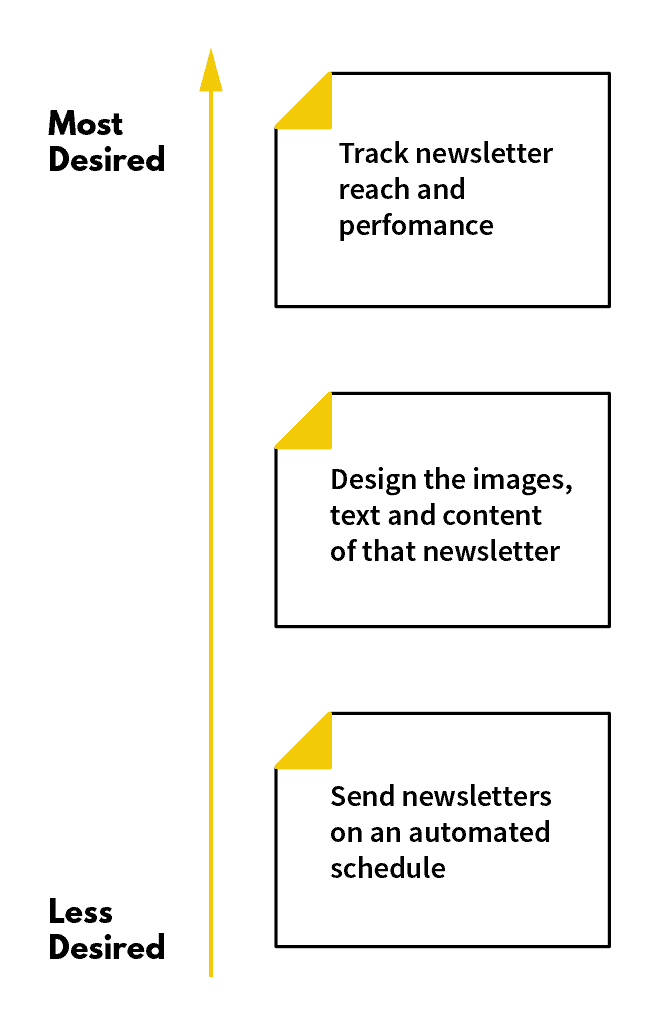
While this can help you understand the motivation that drives a user, how does that relate to the user’s context?
#2. Context
What are the circumstances of users?
Understanding the circumstances adjacent users may find themselves in–like industry, workflows, and processes–provides a better understanding of their needs.
Going back to Mailchimp, do they use newsletters to send promotions and offers? Or do subscribers expect engaging and beautifully designed newsletters?
Here are some questions you can ask:
- What services are used?
- What are the objectives?
- How are they measured?
- What are the top challenges?
Once again map them out:
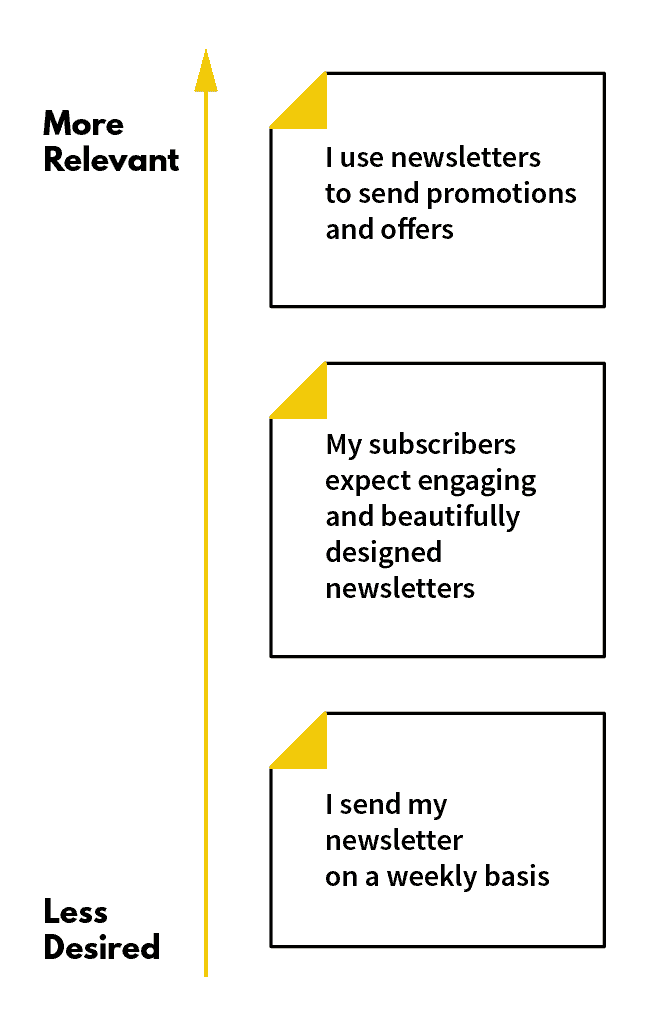
This helps you understand how a product is being used.
If it’s not being used, then why not?
#3. Obstacles
Look for the challenges users face when working on their top priorities. Start with the obstacle that blocks the top job priority.
To dig deeper, check online forums or communities to zero in on the obstacles and identify the point when adjacent users are abandoning their onboarding.
Then contrast the workarounds power users have created to lift these blocks. Use these workarounds to make onboarding easier for your adjacent users.
Let’s apply this to our Mailchimp example.
Maybe users don’t have the visibility they want to determine the success of their newsletters and campaigns.
Or there aren’t sufficient brand resources to design their emails. Or scheduling newsletters in advance takes too much time.
By determining the most painful obstacle, Mailchimp can improve their product and grow their market by making onboarding easier for their adjacent users.
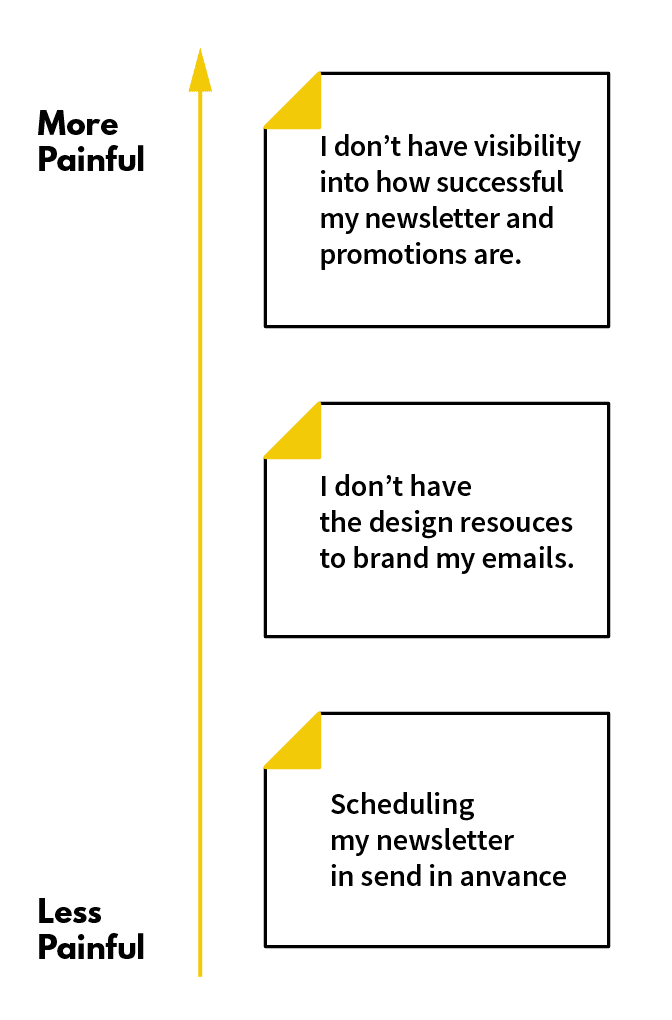
Here are some questions to help find a solution to onboarding obstacles.
- Where are the top challenges you face while working on your “xyz” priority?
- What are some of the workarounds you’ve developed to get around those obstacles?
- At what point are adjacent users abandoning your onboarding?
- What actions do power users take to get through these steps?
Watch recordings of users (using a tool like Hotjar) to help locate the precise point where adjacent users are abandoning the onboarding process.
Find the point where the obstacles are denying the user their expected outcomes.
#4. Expected Outcomes
Find the product’s impact on your customers’ lives and how it helps them accomplish their goals.
Expected outcomes are your product’s impact on business processes and are typically similar for core, power, and adjacent users.
Looking at Mailchimp:
- Users expect highly engaged subscribers measured by open and click rates.
- They expect to create aesthetically pleasing, branded newsletters.
- They expect to reduce their admin time for this task by 50%.
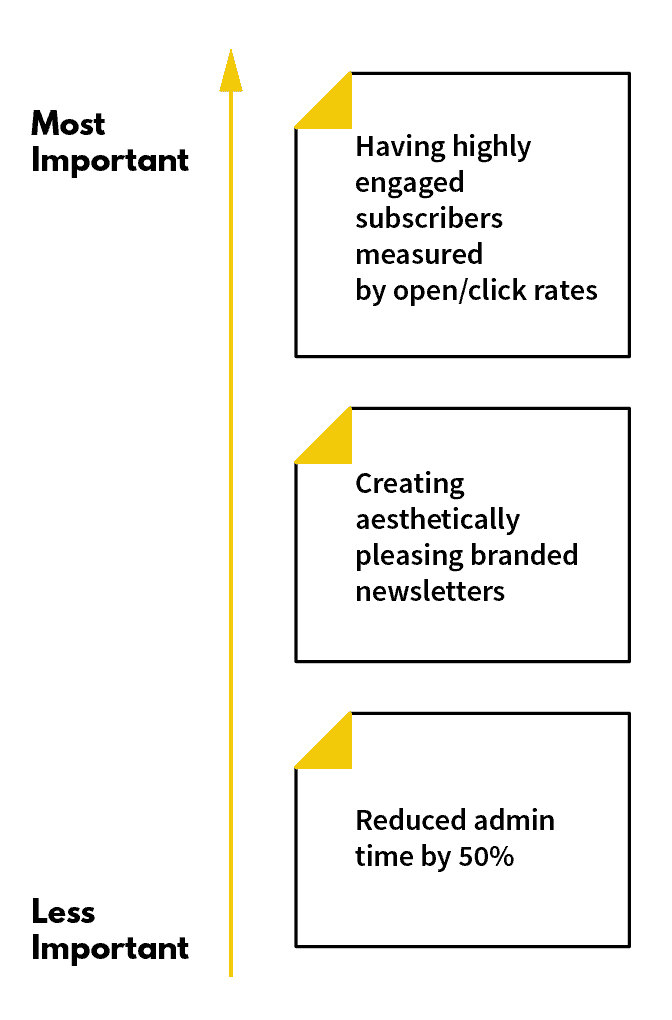
Mailchimp fulfilled these expectations, which fuelled their growth.
If you need help identifying your users’ expected outcomes, ask yourself the following questions:
- What outcomes does the product help you accomplish?
- How?
- Why does that matter?
- How do you measure success?
These questions will also help identify variances in the definition of success between power users and adjacent users, also known as success gaps.
How to Map Success Gaps Between Users
The point of the Jobs-to-be-Done framework is to understand the success gaps between your two users and figure out how to fill those gaps.
The best way to understand the gaps is with a detailed map to see the difference between the functional completion of your product to date and the actual outcome the adjacent user wants.
In the image, we have a detailed success map laid out for email marketing that flows into our Mailchimp example, with three obstacles laid out and potential solutions.
- Lack of email marketing skills: While dealing with a user that doesn’t have the skills to write copy seems daunting, you can solve it with educational resources on your website.
- Lack of design resources: They want something to look beautiful, but they don’t have designers on staff. Mailchimp integrated these resources and made them accessible to small businesses.
- Lack of time for admin: The email automation tools of Mailchimp help quicken the process.
When you have this information, how can you capitalize on it? With growth experiments and final interventions.
The Importance of Growth Experiments & Final Interventions
Let’s now talk about growth experiments.
While the actual growth experiment is the most fun, it’s essential to focus on the product strategy to ensure the qualitative inputs are correct. Quality inputs are vital to the success of qualitative outputs.
Or, to put it simply, your outputs are only as good as your inputs.
But how do you go about actually doing your first experiment and final intervention?
Here’s a framework you can follow to ensure you have qualitative inputs for your question, hypothesis, and experiment.
- Document observations
- Formulate your hypothesis and tie it to your product strategy
- Define your experiment and key metrics
- Execute the experiment
- Measure the results
- Document learnings and decide on next steps
Before moving on to the final intervention, determine if you need to do more experiments or if the experiment you ran was an MVP to test out a final intervention.
Choose to do experiments in a way that will provide quick signals, as it’s better to run multiple experiments quickly to maximize what you learn.
In this stage, it’s essential to leave room for error and learning before you scale it on a final stage.
Let’s go back to our Mailchimp example with an experiment.
- Their power users are business owners who signed up to manage their newsletter.
- 40% of users drop off during the design stage of their onboarding process.
- Based on research, a lack of design resources is a significant obstacle to branding, which is an important outcome. However, Mailchimp expects that creating a simple drag and drop editor will remove this obstacle.
- Use a platform (like Userflow) to test this during onboarding. You can measure the difference in onboarding rates between the sample and control populations.
Use the results to decide on a final intervention to help retain those adjacent users you are losing during the onboarding process.
Final Recap
We’ve gone over the Adjacent User Theory in action, showing you where some of the best growth opportunities reside.
Understanding the obstacles your current users face during the onboarding process can help you improve your product while capturing the adjacent user segment already part of your marketing budget.
The jobs-to-be-done framework and customer data research will help guide your search for those success gaps your business has and identify causality to keep users from falling off in the future.


